
Our accounting manager Zhen and her family had another travel self-driving tour to Jiangnan(江南)this March.
In the Chinese context, "Jiangnan" (江南) refers to the region south of the Yangtze River (长江). It is a geographical and cultural term that encompasses several provinces and cities in eastern China, primarily including parts of Jiangsu Province (江苏省), Zhejiang Province (浙江省), and the city of Shanghai (上海市). Sometimes, it also extends to areas in Anhui Province (安徽省) and Jiangxi Province (江西省).
When we speak of "Xià Jiāngnán" (下江南) – "going down to Jiangnan" or "journeying to the South of the Yangtze River" – we evoke a profound cultural and sensory tapestry deeply rooted in the Chinese imagination. This phrase carries far more than geographical meaning; it conjures a poetic ideal of refinement, nostalgia, and natural harmony.
This is how their travels unfolded.
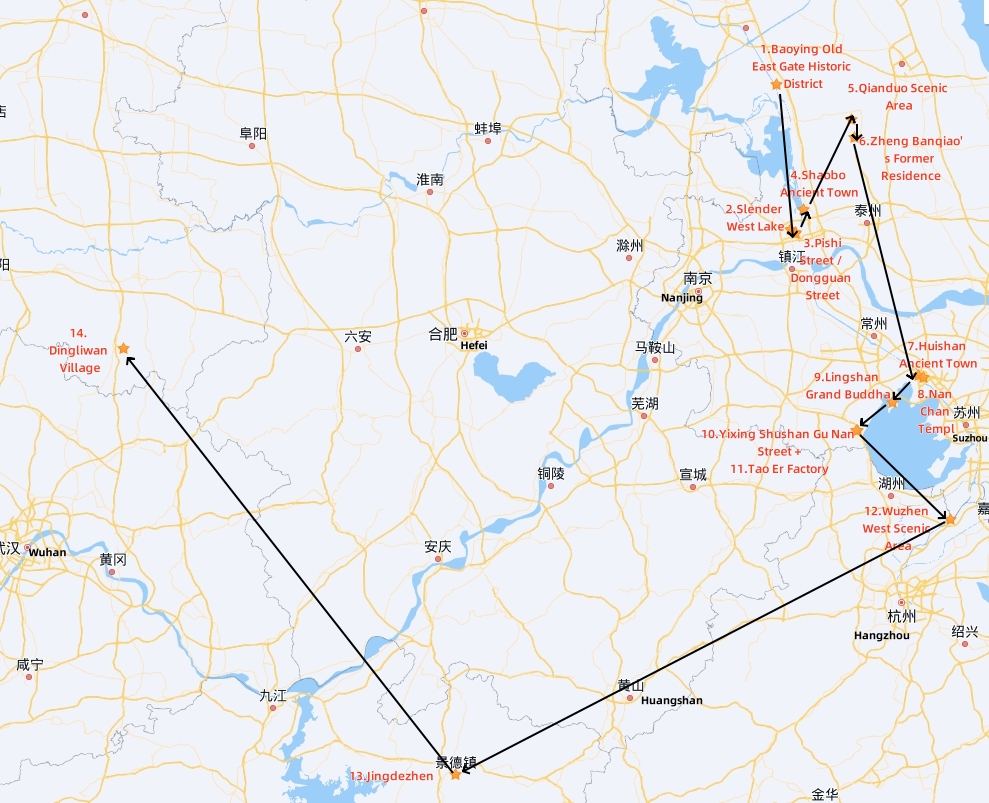
Day 1 (March 22): Zhengzhou → Baoying
- Departure Time: 8:30 AM
Travel Time: Approximately 7 hours
Destination: Baoying(Jiangsu Province)
- First Stop: Night Tour of Baoying Old East Gate Historic District(宝应老东门历史街区)
Baoying Old East Gate is a historic and cultural district of Baoying Ancient City, preserving the architectural style of the Ming and Qing Dynasties. The area is particularly charming at night when illuminated by lights. The district features traditional shops and stone-paved alleys, allowing visitors to experience the local life of a canal town. There was also a spring lantern festival during the visit, adding to the ancient and festive atmosphere.

Day 2 (March 23): Baoying → Yangzhou
- Departure Time: 8:30 AM
Travel Time: Approximately 1.5 hours
Destination: Yangzhou(Jiangsu Province)
- Second Stop: Slender West Lake Scenic Area (瘦西湖景区)(Enter from the West Gate and exit from the East Gate)
A 5A-level scenic area in Yangzhou, known for its "lake garden" landscape that combines the delicacy of the south with the grandeur of the north. Must-see attractions include the Five Pavilion Bridge, Twenty-Four Bridge, White Pagoda, and Fishing Terrace.
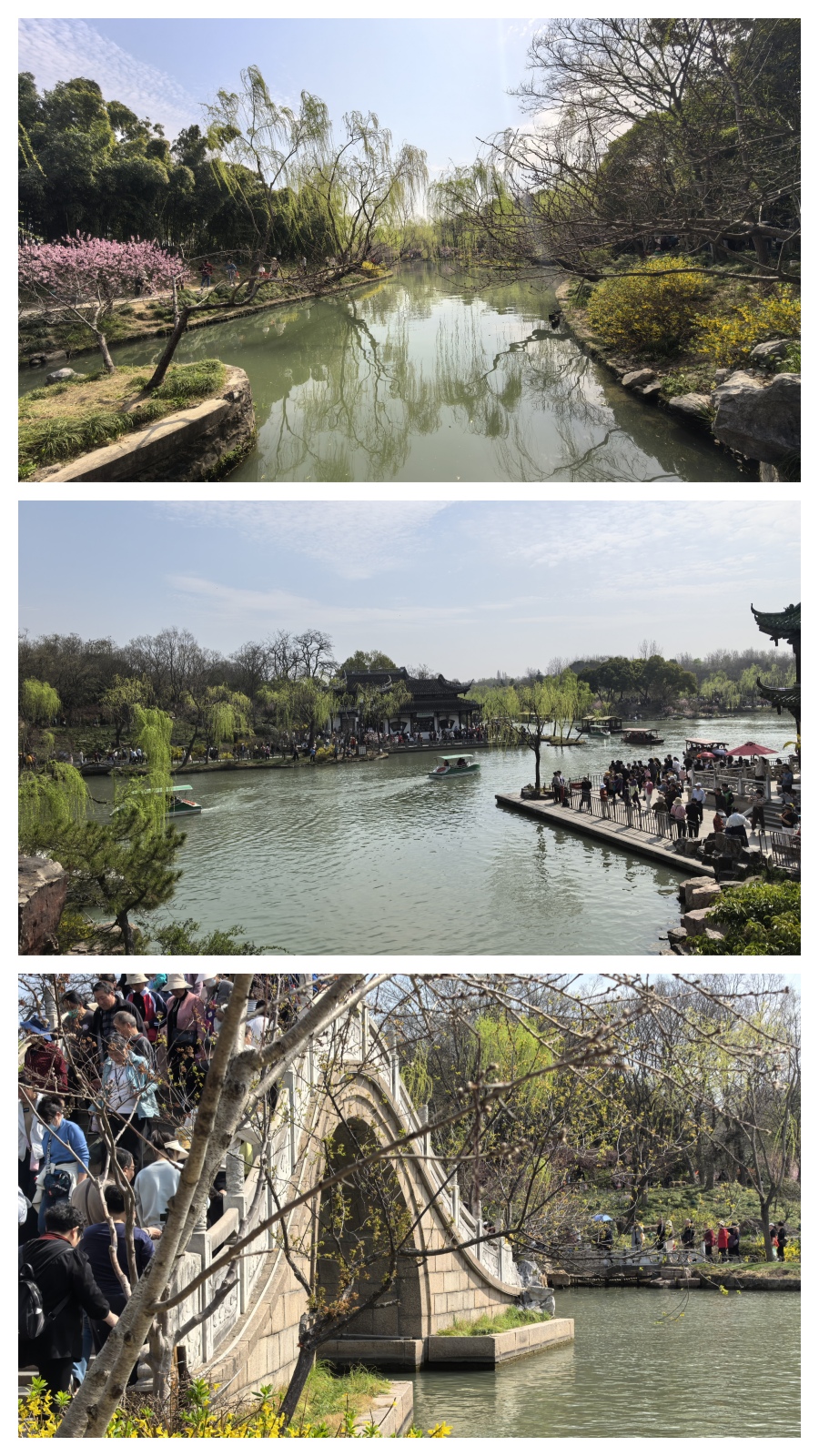
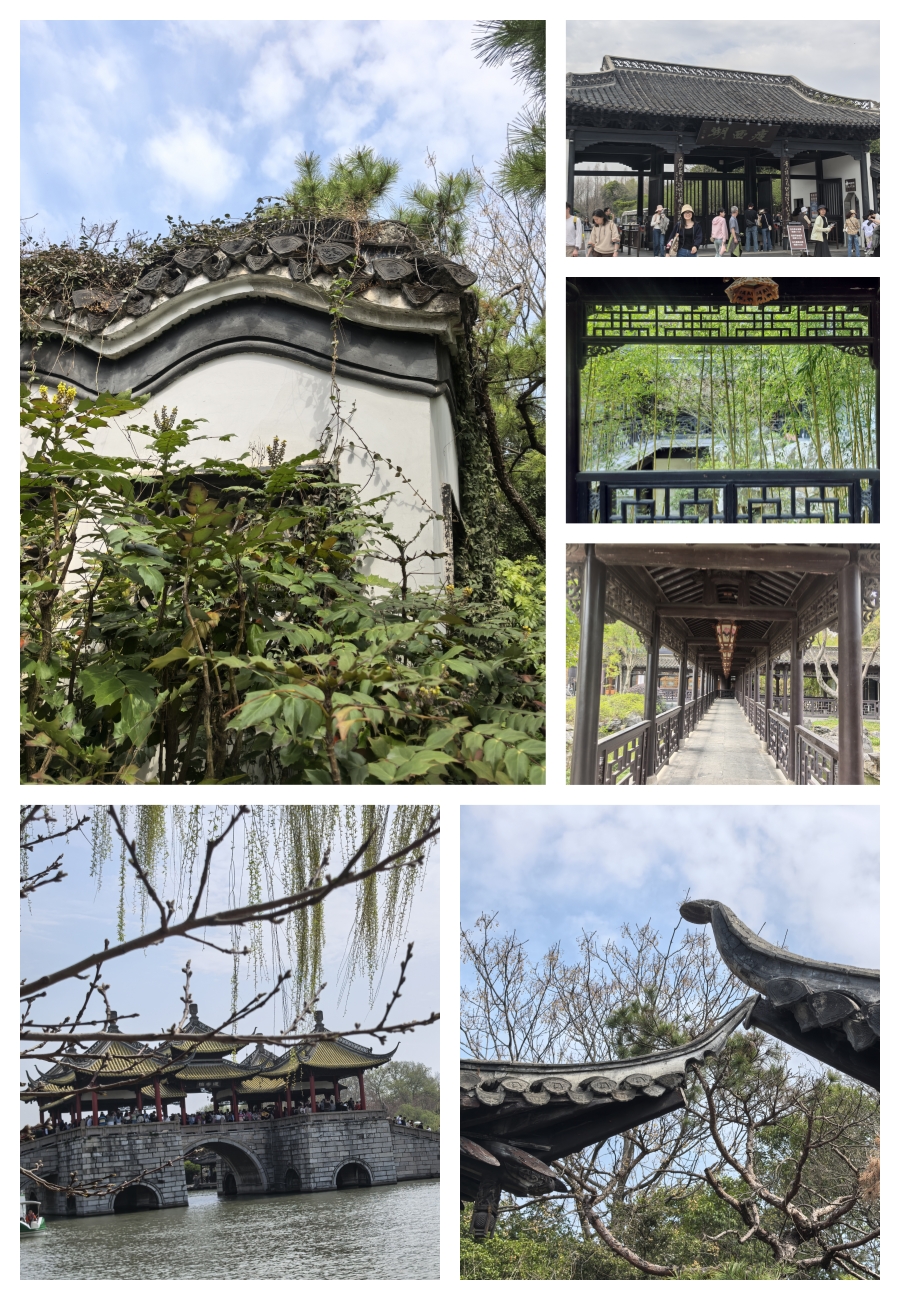
- Lunch: Enjoy Yangzhou cuisine at Jing Laolao Huaiyang Home Cooking.
Recommended Dishes: Signature Fish Head Pot, Grandma's Braised Pork, Tofu Shreds, Oil-Infused Broad Beans, and Yangzhou Fried Rice.

- Third Stop: Pishi Street / Dongguan Street Historic Districts(皮市街/东关街历史街区)
Pishi Street is known for its artistic and fresh atmosphere, with many trendy bookstores and cafes. Dongguan Street, on the other hand, is a historic commercial street from the Ming and Qing Dynasties, featuring salt merchants' residences and the entrance to Ge Garden. Visitors can experience Yangzhou's time-honored brands and local culture. Must-visit spots include Fusheng Bookstore and Biancheng Bookstore, where you can also enjoy Yangzhou's local yogurt—Yangda.
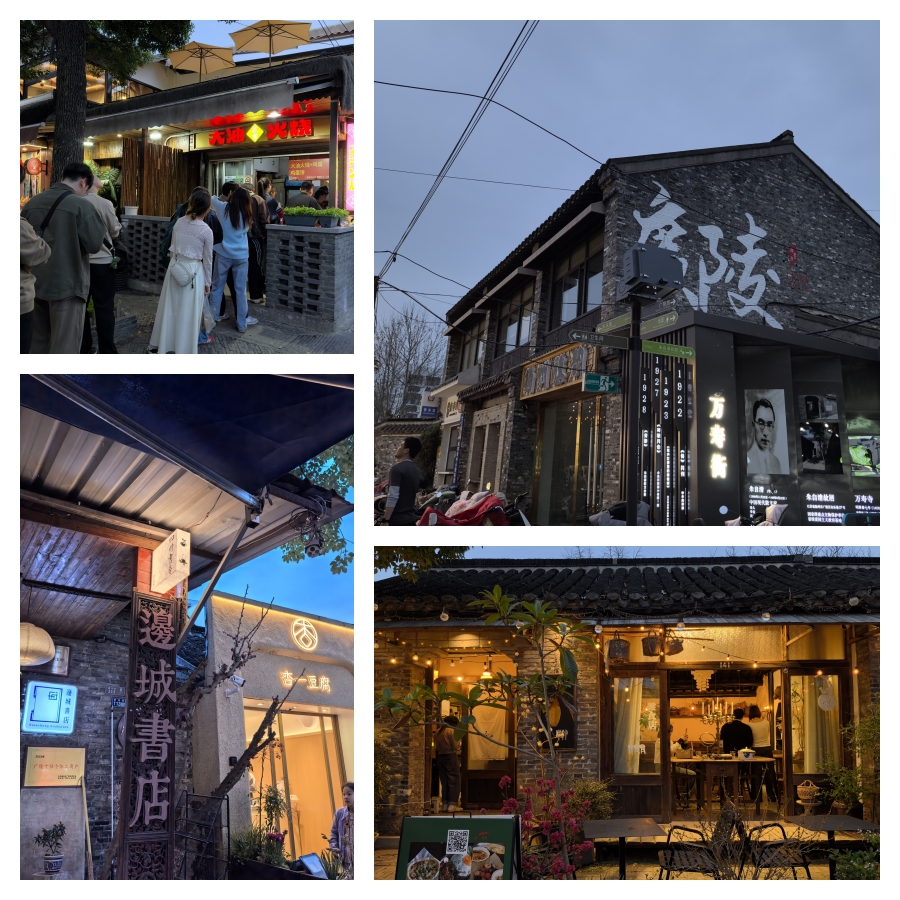
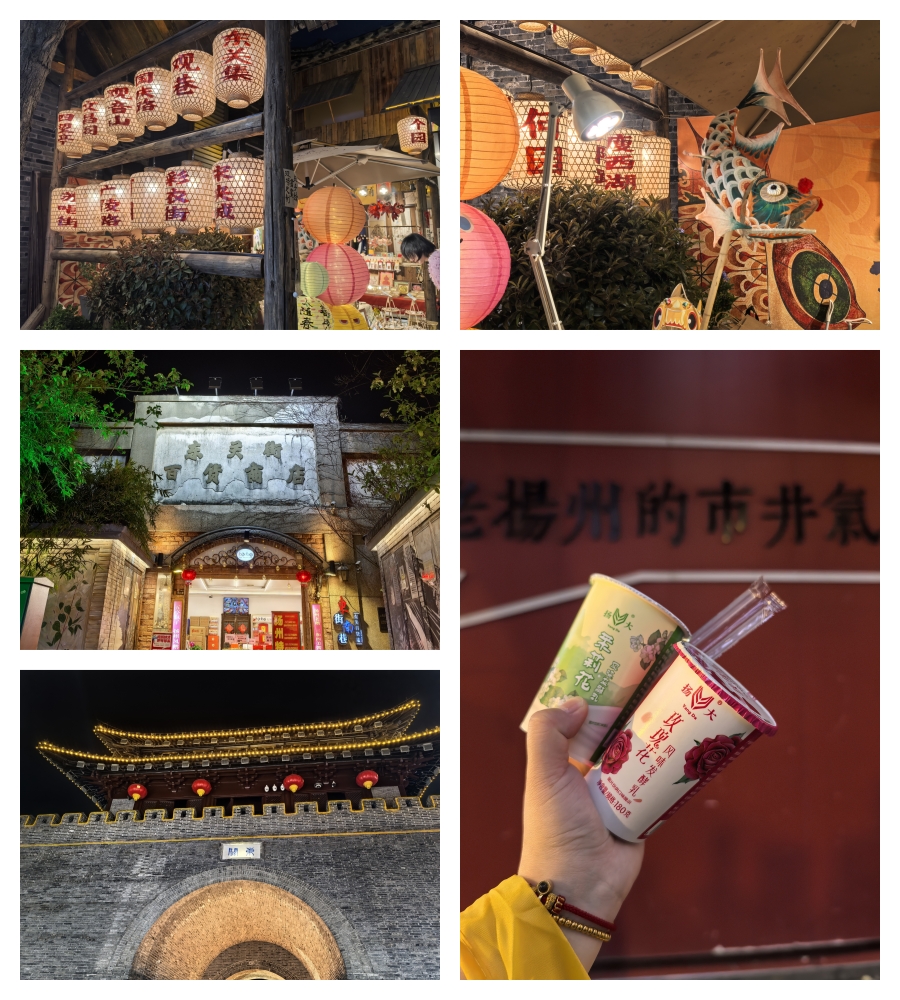
Notes:
- Ticket: The entrance fee for Slender West Lake is 100 yuan, with a 50% discount for seniors over 60 years old.
- Parking: There are many parking lots around the scenic area (such as the Slender West Lake South Gate Parking Lot and Dongguan Street Parking Lot), with fees ranging from 5 to 10 yuan per hour.
Day 3 (March 24): Yangzhou → Xinghua
- Departure Time: 8:30 AM
Travel Time: Approximately 1 hour
Destination: Shaobo Ancient Town(Yangzhou City, Jiangsu Province)
- Fourth Stop: Shaobo Ancient Town (邵伯古镇)(Free, recommended visit time: 2 hours)
This is a pleasant surprise in the itinerary. Located by the Grand Canal, this ancient town has a history of a thousand years and was a major center for salt and grain trade during the Ming and Qing Dynasties. It is a clean and quiet village with few tourists. Visitors can walk along the ancient streets, see historical sites such as Douye Pavilion, the Iron Ox for Water Control, and the stone-paved streets, and stroll along the canal embankment to experience the history of this town that "lives because of the river."
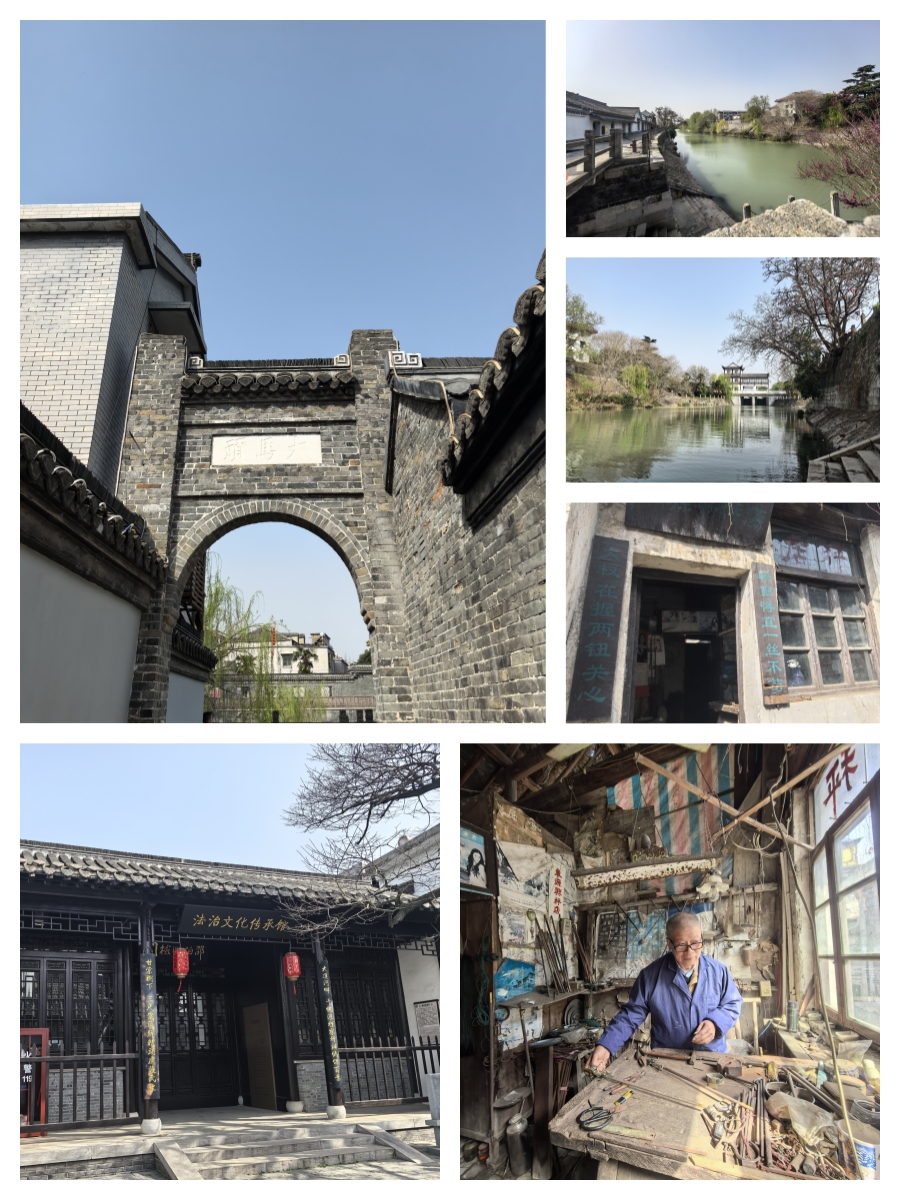
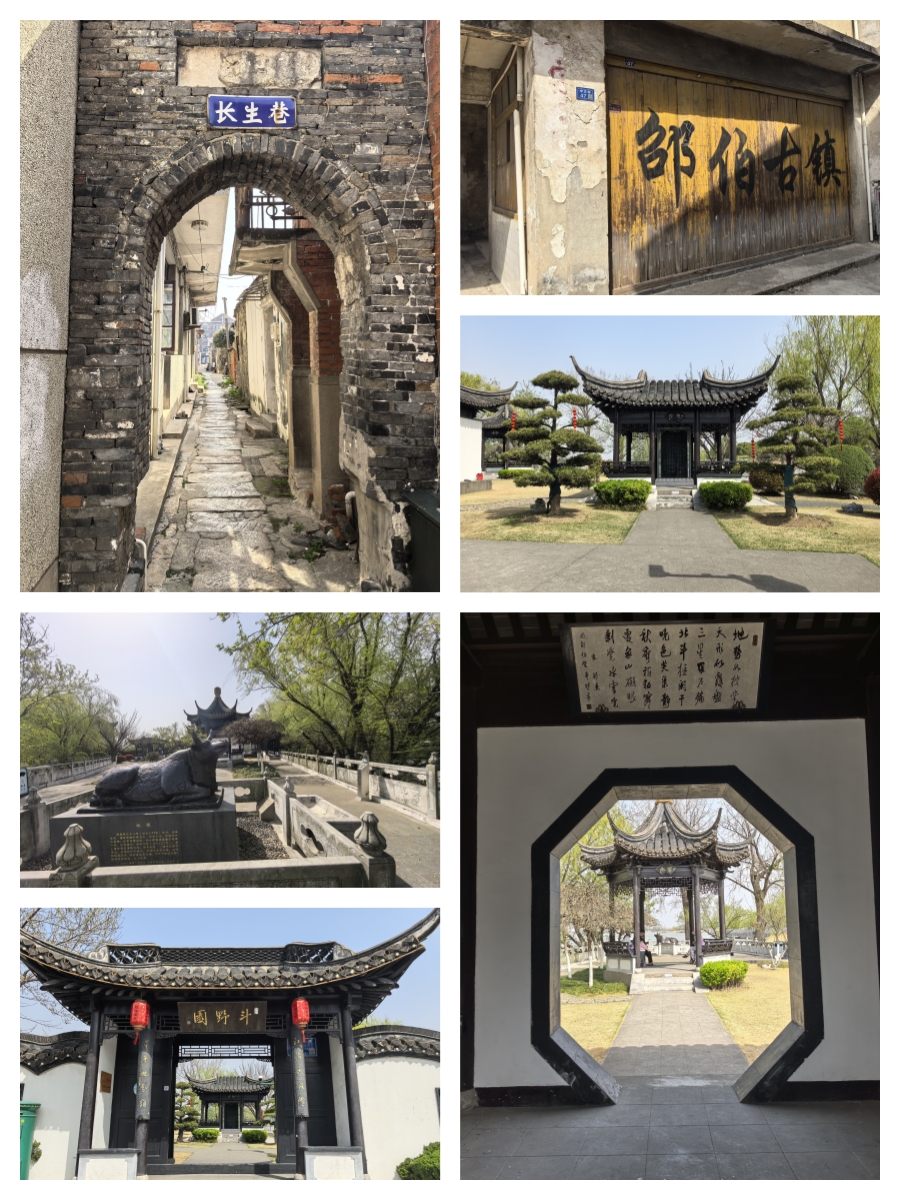
- Fifth Stop: Qianduo Scenic Area(千垛景区)(Xinghua City, Taizhou City, Jiangsu Province)
A representative of the "dike fields" landscape, which is a globally important agricultural heritage. In spring, thousands of acres of rapeseed flowers bloom, creating a unique spectacle of "fields in the river and rivers in the fields." Visitors can take a boat ride through the golden sea of flowers, climb up to a viewing platform or watchtower to overlook the entire Qianduo area, or walk along the boardwalk to take photos deep in the flower sea. Renting a Hanfu (traditional Chinese clothing) or wearing a light-colored long skirt with an oil-paper umbrella as a prop can make for great photos.
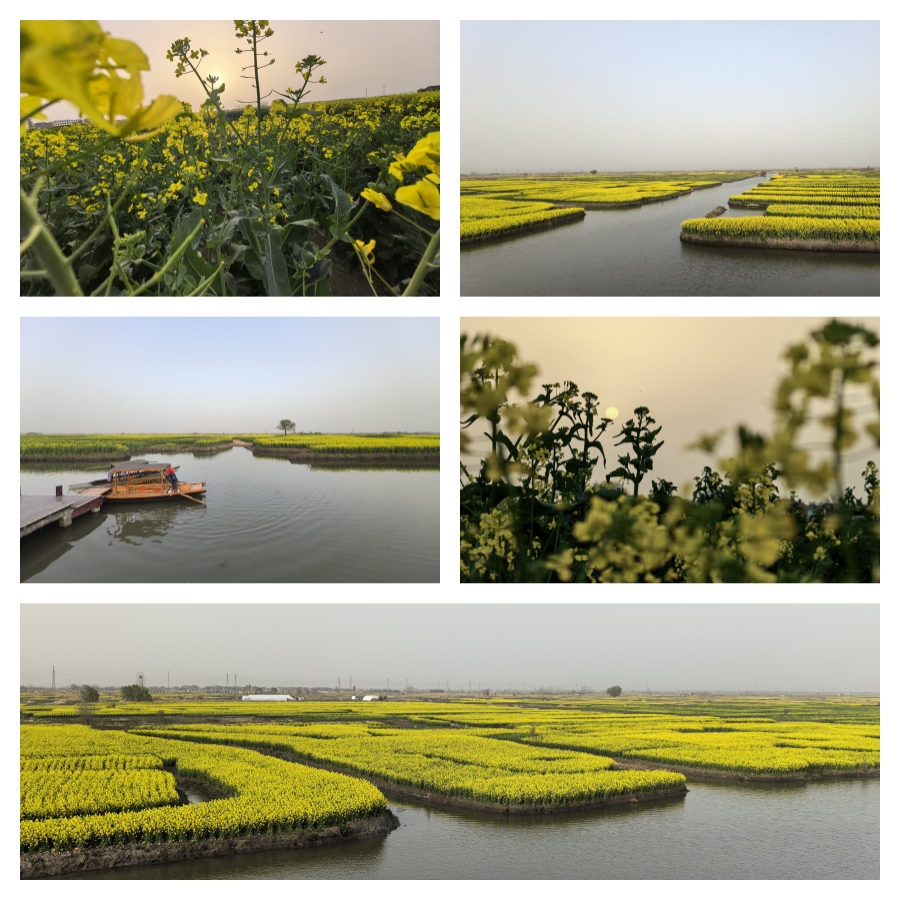
Notes:
- Ticket: Free for Shaobo Ancient Town.
- Ticket for Qianduo Scenic Area: The visiting season is from March to April. The ticket costs 50 yuan per person, plus a boat ticket of 40 yuan per person.
Day 4 (March 25): Xinghua → Wuxi
When in the south of the Yangtze River, it is essential to experience the local morning tea culture. Start the day at Qingfeng Teahouse, ranked first in Xinghua for its morning tea.
Recommended Dishes: Crab Roe Buns, Three-Ingredient Buns, and Tofu Shreds.
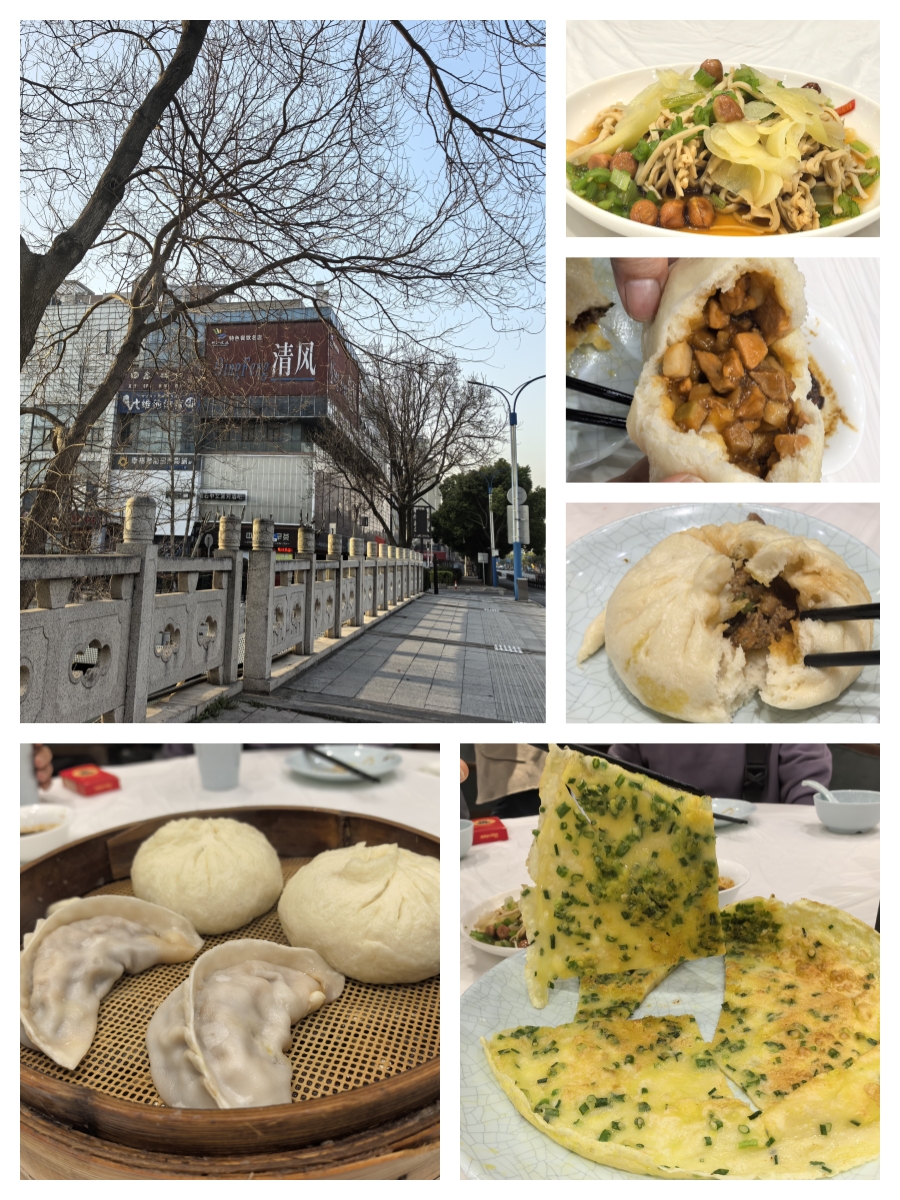
- Sixth Stop: Zheng Banqiao's Former Residence(郑板桥故居)(Xinghua City, Taizhou City, Jiangsu Province)
Xinghua is a cozy southern Jiangnan city. After enjoying the morning tea, take a leisurely walk to the former residence of Zheng Banqiao, one of the "Yangzhou Eight Eccentrics" in the Qing Dynasty. The residence displays his authentic calligraphy and paintings, life stories, and the origins of famous sayings like "Better to be confused than to be too clear." It is a tranquil courtyard.
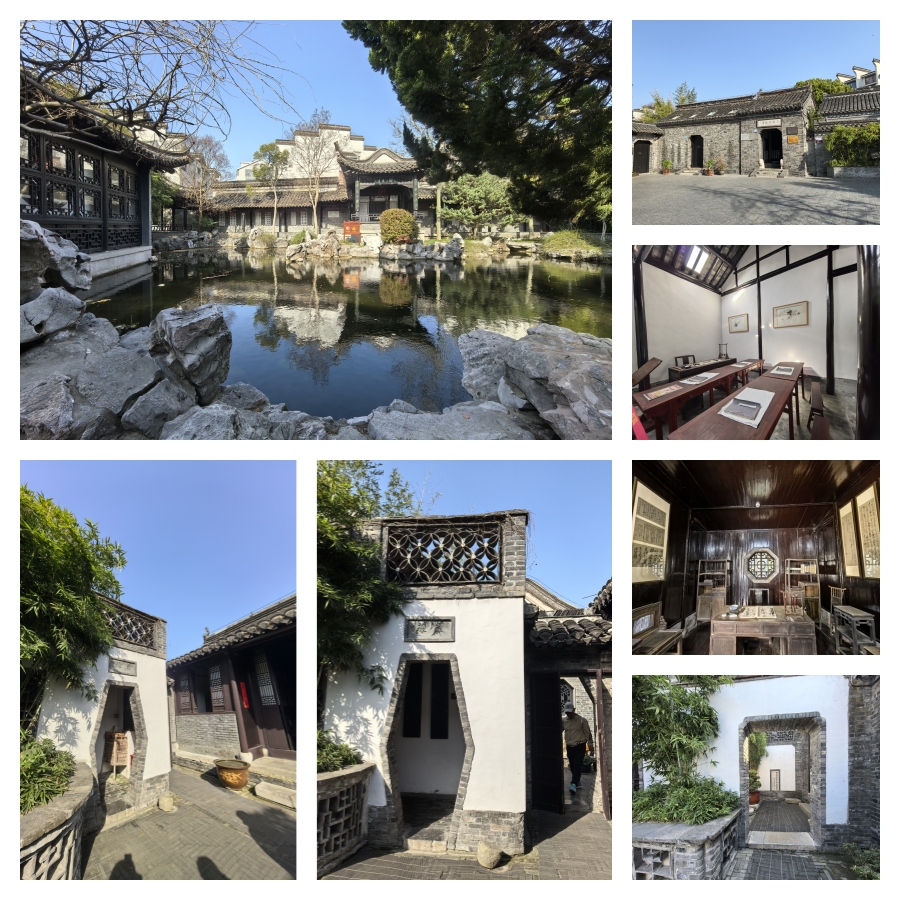
- Seventh Stop: Huishan Ancient Town(惠山古镇) (3 hours visit)(Wuxi City, Jiangsu Province)
In the afternoon, head to Wuxi and wander through Huishan Ancient Town, a concentration of Jiangnan ancestral hall culture. With 118 ancestral halls, it is an open-air architectural museum. The town is especially charming when the lights come on in the evening.

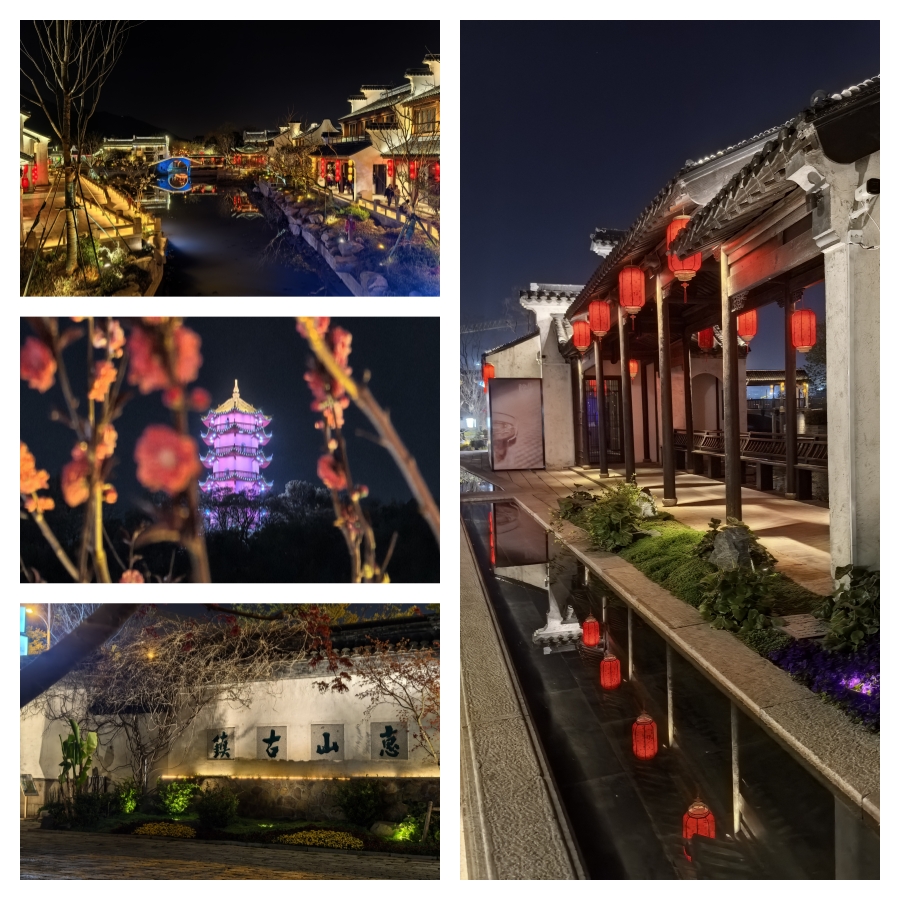
- Dinner: Erquan Garden Old Restaurant in Huishan Ancient Town
Erquan Garden Old Restaurant is a century-old establishment in Huishan Ancient Town, Wuxi, known for its authentic Wuxi cuisine.
- History: Founded in 1920 by Zhu Bingxin (nicknamed "Big Glasses") at No. 7 Huishan Street (now No. 3 Xiuzhang Street), named after the "Second Best Spring in the World."
- Legacy: In 1956, it merged with several other restaurants to become the Huishan Branch of Jufengyuan. It resumed the "Erquan" name in 1980, temporarily closed due to ancient town construction, and reopened in its original location in 2010.
- Cultural Heritage: As the birthplace of "Liangxi Crispy Eel," this dish is listed as a Jiangsu provincial intangible cultural heritage and has been included in various famous dish collections.
Recommended Dishes: Big Eyes Crispy Eel, Wuxi Pork Ribs, Huishan Sesame Seed Cakes, and Old Street Shrimp Tofu Pudding.
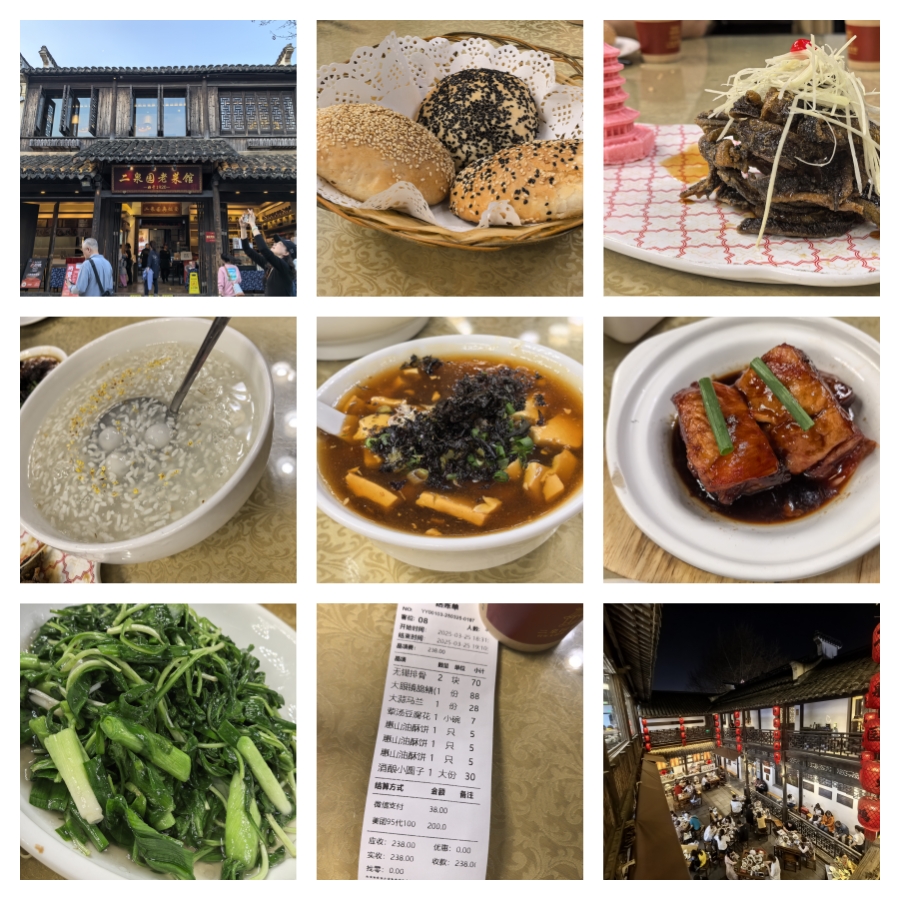
Day 5 (March 26): Wuxi → Yixing
A Deep Dive into Culture and Scenic Beauty
- Eighth Stop: Nan Chan Temple(南禅寺)(Wuxi City, Jiangsu Province)
Located by the ancient canal in Liangxi District, Wuxi, Nan Chan Temple was originally built in the first year of the Taiqing era of the Southern Liang Dynasty (547 AD) and was initially named "Huguo Temple." It is one of the "Four Hundred and Eighty Temples of the Southern Dynasties." Rebuilt during the Tian Sheng years of the Northern Song Dynasty (1023-1032), it was renamed "Fusheng Chan Temple" by Emperor Renzong of Song. Commonly known as "Nan Chan Temple" due to its southern location in Wuxi, it is acclaimed as the "Most Prosperous Buddhist Forest in Jiangnan." The temple has undergone multiple destructions and reconstructions through the Tang, Song, Yuan, Ming, and Qing Dynasties, with its existing architecture mainly in the Ming and Qing styles.

- Ninth Stop: Lingshan Grand Buddha(灵山胜境-灵山大佛) (Wuxi City, Jiangsu Province)
(3-4 hours recommended)
Arrive before 10 a.m. to visit the Lingshan Grand Buddha, which features an 88-meter-tall bronze statue of Sakyamuni Buddha, one of the tallest bronze Buddha statues in the world. The statue's right hand is in the Abhaya Mudra (dispelling suffering for all beings), while the left hand is in the Varada Mudra (granting blessings). The scenic area is nestled against the Xiao Ling Mountain and overlooks Taihu Lake, with a Feng Shui layout described as "unmoved by the eight winds, seated on the lotus of purple gold." The 216 steps of the Cloud Road symbolize the Buddhist saying "Saving one life is better than building a seven-story pagoda," with stone carvings along the way documenting the history of Buddhism in Lingshan. Lingshan Grand Buddha is not only a pilgrimage site for Buddhists but also an excellent place for tourists to experience the integration of Eastern culture, nature, and art.
Notes:
- Ticket: 210 yuan, with an additional 40 yuan for the entire electric vehicle tour. Seniors over 60 years old enjoy a 50% discount. Must-visit spots include the base of the Grand Buddha, where you can touch the Buddha's feet and climb the 216 steps.

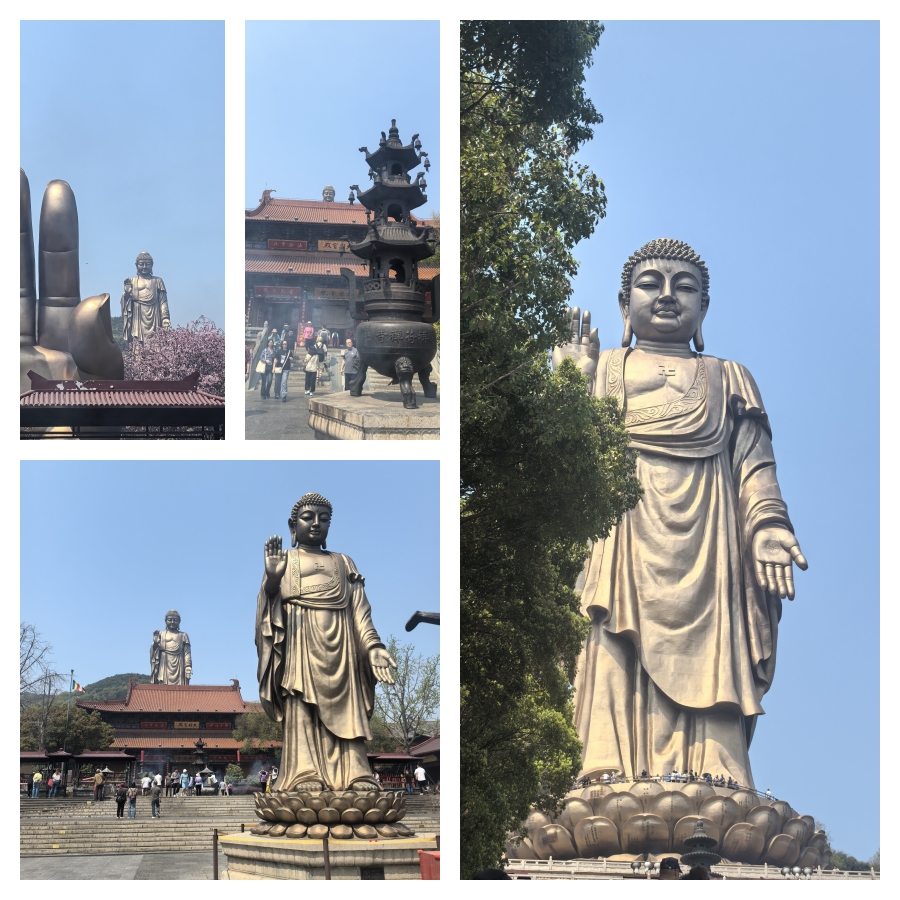
- Lunch: Enjoy jiaozi (dumplings) with shepherd's purse at a time-honored restaurant outside the Lingshan scenic area.

- Tenth Stop: Yixing Shushan Gu Nan Street(宜兴蜀山古南街) (Yixing City, Wuxi City, Jiangsu Province)
This ancient street is known for its traditional architecture and Yixing's purple sand culture. Stroll along the stone-paved roads, capture the picturesque Jiangnan water town scenery with white walls and black tiles, and the retro street view along Li River, which forms a unique "bridge within a bridge" composition with Shushan Bridge. You can also visit purple sand workshops for free and purchase purple sand teapots and ornaments.
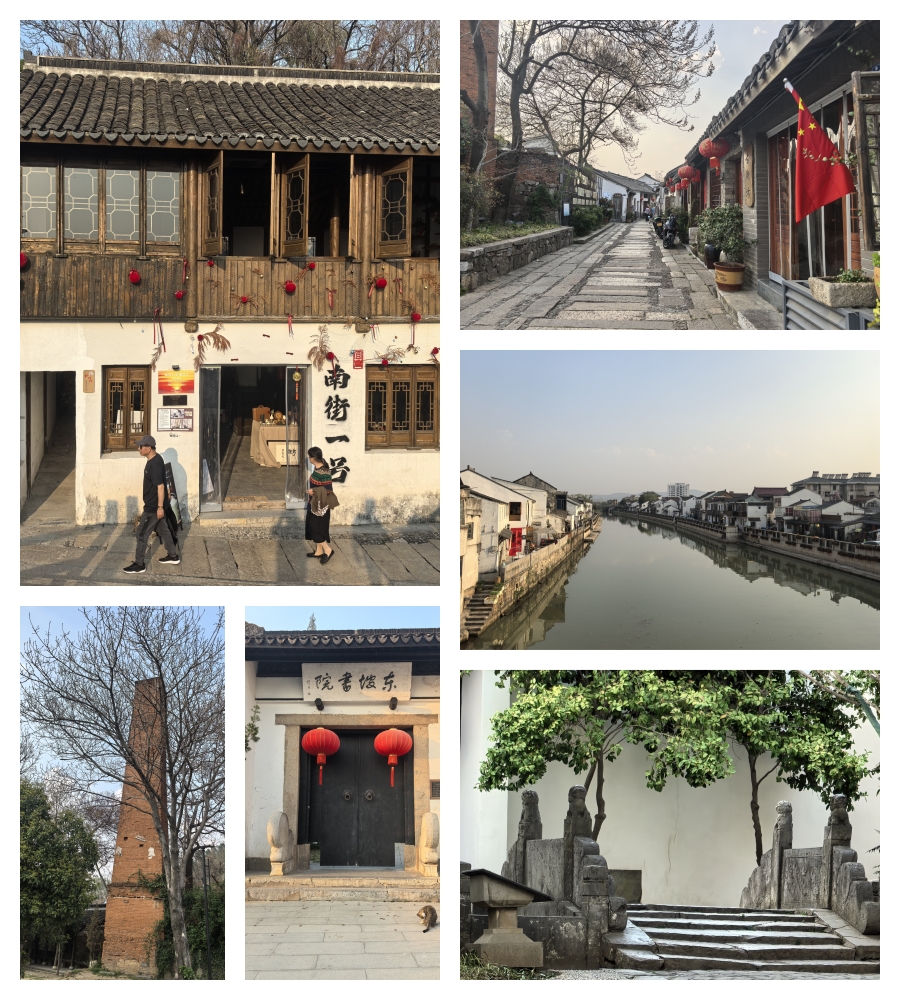
The Dongpo Academy is also located near the ancient street and is worth a visit.
- Eleventh Stop: Tao Er Factory(陶二厂) (Yixing City, Wuxi City, Jiangsu Province)
Tao Er Factory Art Museum
Transformed from a 40-year-old Yixing Purple Sand Factory No. 2, this place combines industrial style with artistic design. The iconic building features a tile exterior designed by the international master Kengo Kuma, with a visually striking red-brown terracotta texture and geometric structure.
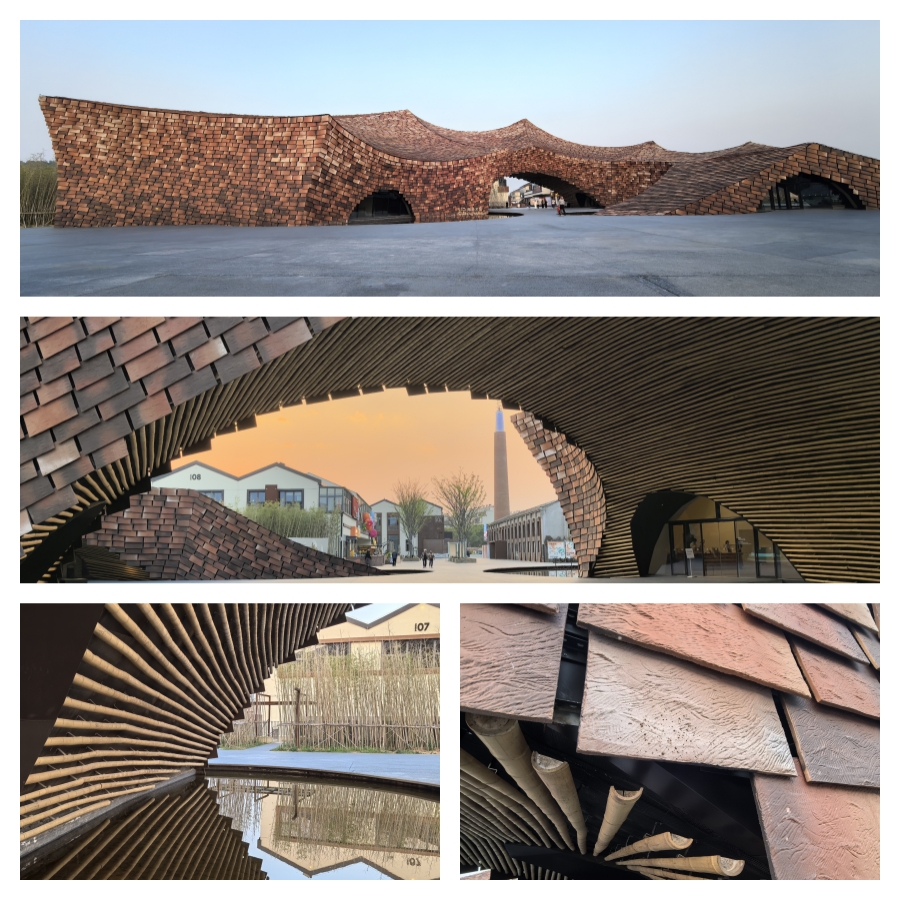
- Dinner: Jiao Min Rice and Vegetables
Located in Dingxu Town, Yixing, Wuxi, Jiangsu Province, Jiao Min Rice and Vegetables is a well-known local restaurant famous for its salted meat and vegetable rice. With its authentic home-cooked flavors and great value for money, it has become a "must-visit" spot for both locals and tourists. The salted meat and vegetable rice is a must-try, with distinct rice grains, marbled salted meat, sweet and tender vegetables, and a crispy, fragrant rice crust at the bottom, reminiscent of the traditional "stove rice" from childhood.

Day 6 (March 27): Yixing → Tongxiang
- Twelfth Stop: Wuzhen West Scenic Area(乌镇西栅景区)(Tongxiang City, Jiaxing City, Zhejiang Province)
A quintessential Jiangnan water town, renowned for its "waterfront homes" and night views. Visit the Xin Art Museum and send postcards from the old post office. At night, the area is particularly poetic under the illumination of lights. Tongji Dyeing Workshop's "kao hua lan bu" (blue printed cloth) requires 32 processes, with a special focus on the "soybean flour + lime" resist-dyeing formula in the Chinese traditional ash dyeing. The workshop is not only an important place for studying ancient dyeing and weaving techniques but also a window to understanding the traditional dyeing and weaving culture of Jiangnan.
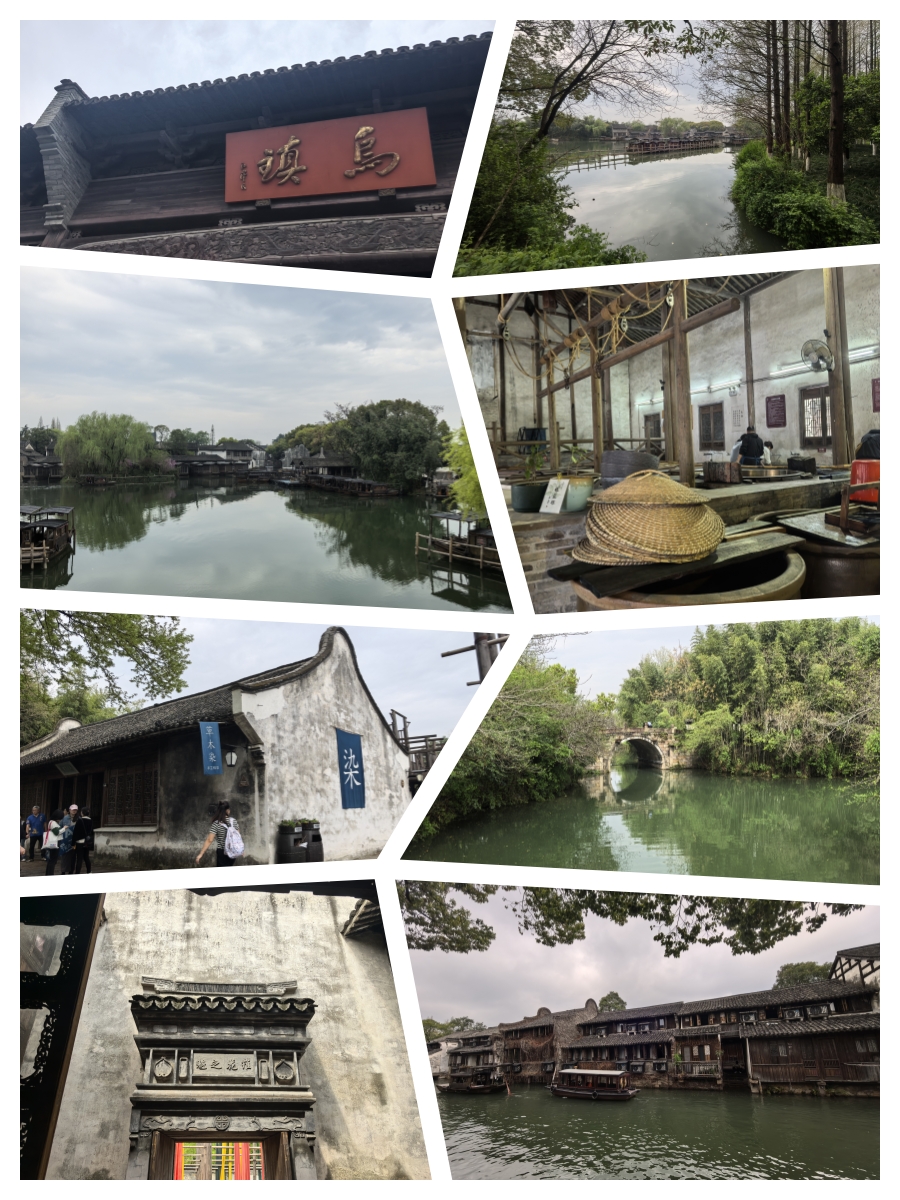
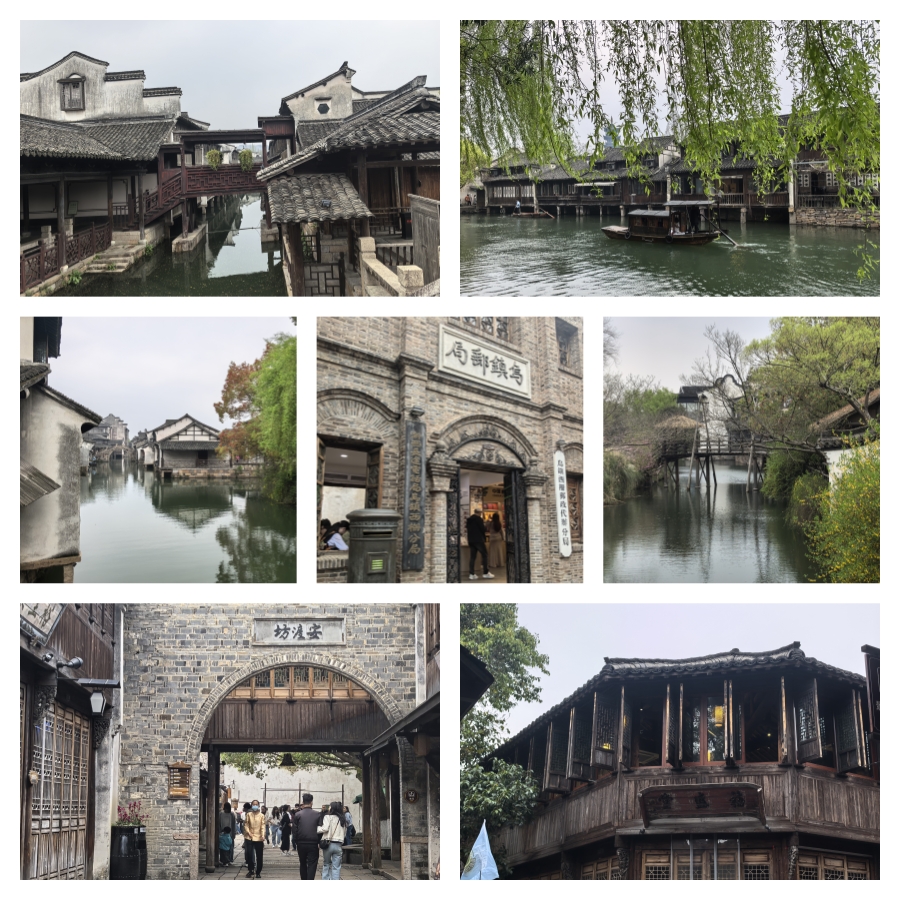
Day 7-8 (March 28-29): Tongxiang → Jingdezhen
- Thirteenth Stop: Jingdezhen(景德镇)(Jingdezhen City, Jiangxi Province)
- Breakfast: Jiangxi cold rice noodles, dry-mixed rice cakes, and egg meat pancake soup.
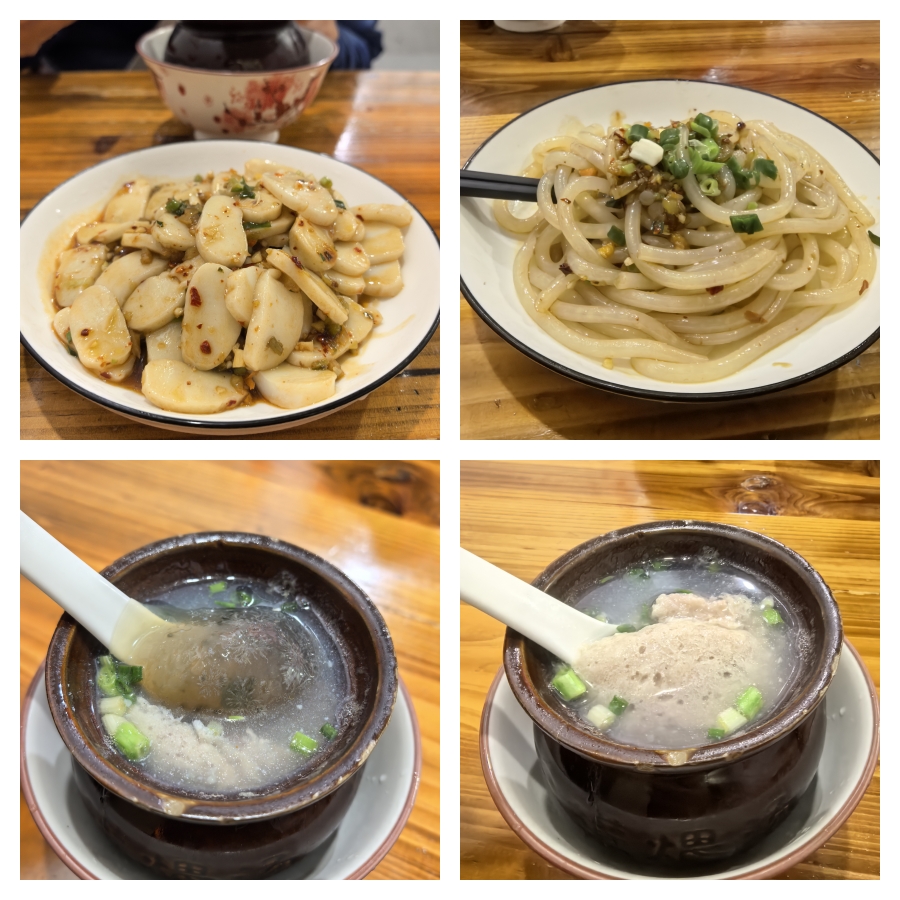
- Trip to the Porcelain Expo City → Jingdezhen Sculpture Porcelain Factory → Taoxichuan Creative Cultural District
- Porcelain Expo City: A large porcelain wholesale market with a wide variety of daily-use and artistic porcelain items at affordable prices, suitable for purchasing daily porcelain products.
- Sculpture Porcelain Factory: A long-standing gathering place for young ceramic artists. The factory area features many market stalls, and a creative market on weekends, focusing on original designs with slightly higher prices but stronger artistic value.
- Taoxichuan Creative Cultural District: An artistic district transformed from an old porcelain factory, combining red brick factory buildings with art exhibitions. The art museum regularly hosts exhibitions, with the most recent one featuring outstanding graduation works from the Central Academy of Fine Arts. The market here only operates on weekends in the evenings, offering many excellent original works. Due to the high threshold for market stalls, the prices are the highest among the markets, and the night view of the chimneys is particularly charming.
Notes:
- Each market in Jingdezhen operates at different times. The Taoxichuan market is open from Friday to Sunday after 4 p.m., the Sculpture Porcelain Factory's market is open daily during the day, and the Letian Market is open on Saturdays in the morning.
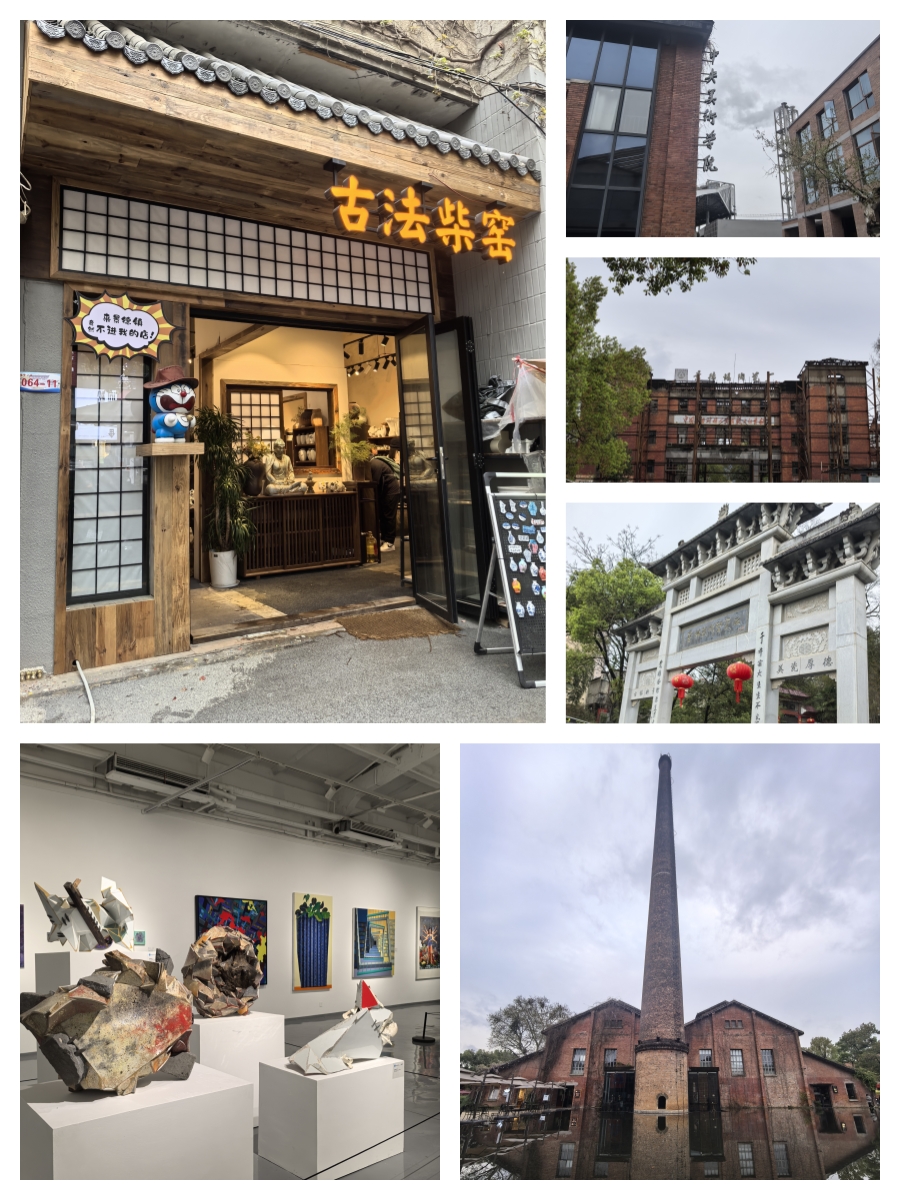
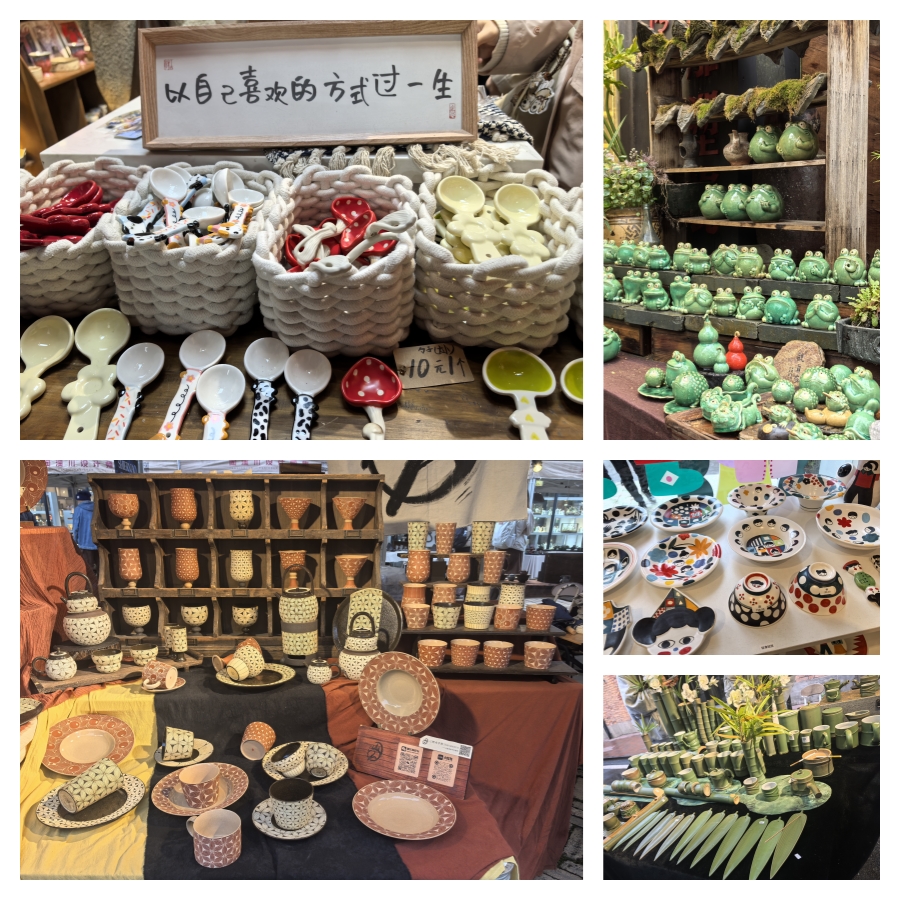
Day 9-10 (March 30-31): Jingdezhen → Xin County, Xinyang City → Zhengzhou
- Departure Time: 8:30 AM
Travel Time: Approximately 5 hours
Destination: Xin County, Xinyang, Henan
- Fourteenth Stop: Dingliwan Village(丁李塆村)(Xin County, Xinyang City, Henan Province)
A traditional ancient village in southern Henan, characterized by its blue-brick and grey-tile residences and carved doorways, preserving the agricultural cultural heritage from the Ming and Qing Dynasties. It is an ideal place for capturing rural scenery.
The architectural style of Dingliwan is based on the original "Hui-style architecture" but incorporates many features of the southern Henan region. It combines the elegance of Hui-style architecture, such as white walls, black tiles, horse-head walls, and sky wells, with the rugged simplicity of northern courtyard houses, forming a unique "Hui-style-like" architectural style with distinct regional cultural characteristics. A particularly interesting feature is the unique defensive design of the courtyards. There are several holes on the doorposts and under the eaves of the houses, which were used to fire blunderbusses and watch for enemies during invasions.
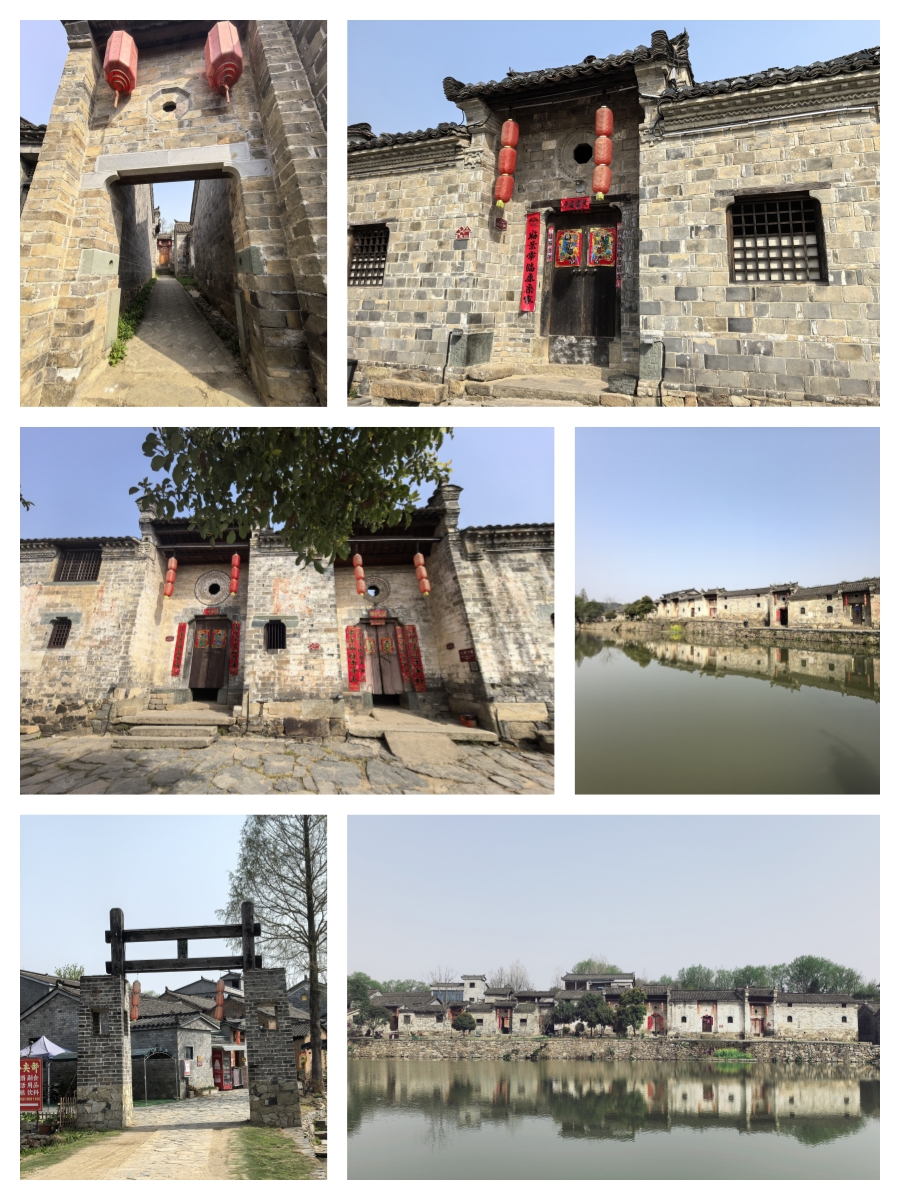
After visiting, it takes about 3 hours to return to Zhengzhou.
